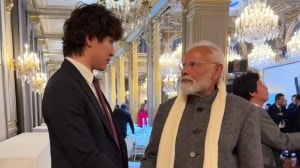It was a win for history and archaeology enthusiasts all over the world as the Grand Egyptian Museum (GEM) finally opened its doors to the public, 23 years after the first stone for the awe-inspiring structure was laid down. The museum which has been described as a “fourth pyramid” of the Giza plateau, owing to its enormous size and triangular shape, immaculate collection and proximity to the actual three pyramids of Giza cost the government of Egypt $1 billion to construct. It was built in a joint collaboration between Orascom Construction and the Belgian BESIX Group according to the latter’s company website.
With the complex having an area of 53,81,955 square feet the museum is the world’s “largest archaeological dedicated to a single civilization” according to Al Ja Zeera. It is located 2 km from the pyramids of Giza, which makes them visible from the museum and 8 km from Cairo, the capital city of Egypt.
The architectural magnificence of GEM
According to Conde Naste Traveller, The museum was designed by Irish architecture firm Heneghan Peng who were awarded the project in 2003. The complex itself is shaped like a “chamfered triangle” and the museum’s north and south walls are aligned with the Pyramid of Khufu and the Pyramid of Menkaure. The walls of the structure were constructed using sand-coloured concrete and translucent alabaster stone while frosted glass panels make up the front.
The museum complex comprises the main building, the Khufu boat museum, a courtyard, a conference center, a children’s museum, a Nile Valley park and a conference centre. Within the main building, there are 12 permanent exhibition halls that are organized by both era and theme. These halls can be accessed by the six-storey-tall grand staircase which serves as a transitional gallery with more than 60 artefacts. Visitors are greeted by the gigantic 36-ft tall and 3,200-year-old statue of King Ramses II upon entering GEM. This 83 tonne statue once stood at the centre of Ramses Square in the heart of Cairo now guards Egypt’s most precious archaeological treasures.
What can visitors expect to see inside the museum?
The Grand Egyptian Museum is home to over 100,000 artefacts. The Tutankhamun Gallery, which is the largest exhibition space in the museum, alone houses more than 5,000 artefacts unearthed from the tomb of the legendary boy Pharaoh who ruled Egypt during the eighteenth dynasty 3,400 years ago. Visitors have the opportunity to see his throne, sarcophagus, golden mask, chariots and jewellery, all presented in a recreation of his royal burial chamber.
Notably, the 100,000 artefacts that have been assembled belong to the 30 dynasties that ruled Egypt from the Predynastic period to Roman Egypt. According to the BBC, 20,000 artefacts were presented to the public for the first time ever. Rare sights include: the two solar ships of Khufu, some of the world’s oldest intact boats at 4,600 years old, the collection of Queen Hetepheres and the collections of Yuya and Thuya, parents of Queen Tiye.
Egypt is hoping to revive its tourism sector with the opening of GEM. The country suffered from political unrest due to the Arab Spring of 2011 and tourism took a direct hit because of it. With GEM, the government is now anticipating landmark visitor numbers as fans of history are bound to be attracted from across the globe.







